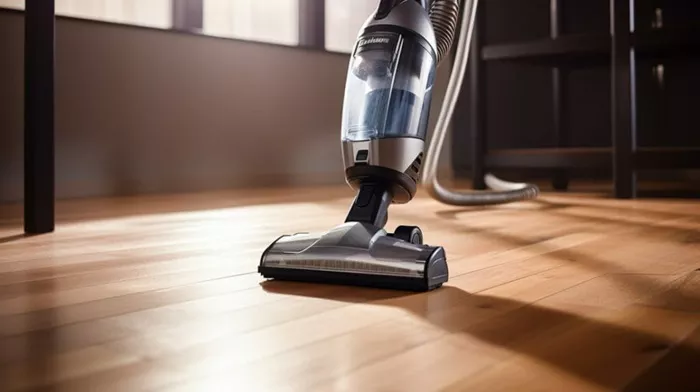Cleaning a filthy floor can be a challenging task, but it’s essential to maintain a healthy and hygienic home. Over time, floors accumulate dust, dirt, and stains that need to be addressed. Whether you are dealing with tile, hardwood, laminate, or carpet, each type of flooring requires a different approach. This article will guide you through the steps to clean a very dirty floor effectively.
Understanding the Type of Floor
Before you begin cleaning, it’s crucial to identify the type of flooring. The approach you use will vary based on the material. The four most common types of flooring are tile, hardwood, laminate, and carpet. Each requires special attention to avoid damage during cleaning.
Tile Floors
Tile floors are durable but often collect dirt in grout lines. They can handle scrubbing and strong cleaners.
Hardwood Floors
Hardwood floors are sensitive to moisture and abrasive chemicals. They need a more delicate cleaning process to avoid damaging the wood.
Laminate Floors
Laminate floors are prone to scratching and water damage. They should be cleaned with a mild solution and minimal water.
Carpeted Floors
Carpets tend to trap dirt deep within the fibers, making them harder to clean. Steam cleaning or vacuuming with a powerful vacuum is often needed.
Preparing the Floor
Before you start scrubbing or using cleaners, it’s important to prepare the floor by removing surface dirt and dust. This makes the cleaning process more efficient and prevents dirt from spreading during cleaning.
Sweeping or Vacuuming
For tile, hardwood, and laminate floors, begin by sweeping or vacuuming the area to remove loose dirt. If you’re working with carpet, a thorough vacuuming will help lift surface dirt before deeper cleaning begins.
Cleaning Tile Floors
Tile floors, especially in high-traffic areas like kitchens or bathrooms, can accumulate grime quickly. The key to cleaning tile is addressing both the tile surface and the grout lines.
Cleaning Grout
Grout often collects more dirt than the tiles themselves. Use a mixture of baking soda and water to scrub the grout lines. Let the mixture sit for a few minutes before scrubbing with a toothbrush or grout brush. Rinse with water afterward.
Mopping the Tiles
Once the grout is clean, mop the tiles using warm water mixed with a tile cleaner. Avoid using too much water, as it can weaken the grout over time.
Cleaning Hardwood Floors
Hardwood floors require a gentle approach to avoid scratching or warping the wood.
Damp Mopping
Use a mop dampened with a cleaner designed for wood floors. Avoid soaking the mop or using excessive water, as this can cause the wood to warp. Mop in the direction of the wood grain to avoid streaking. After cleaning, use a soft cloth to dry the floor.
Cleaning Laminate Floors
Laminate floors are more resistant to stains but can be damaged by water or harsh chemicals.
Gentle Wiping
Use a soft cloth or mop dampened with a mild cleaner for laminate floors. Be careful not to use too much water, as it can seep between the boards and cause swelling. Dry the floor immediately after cleaning to prevent damage.
Cleaning Carpeted Floors
Carpets often hide dirt deep in their fibers, which requires a different approach than hard floors.
Spot Cleaning
If there are visible stains, treat them with a small amount of carpet cleaner. Use a damp cloth to blot the area gently. Avoid rubbing, as this can spread the stain further into the fibers.
Deep Cleaning
For heavily soiled carpets, steam cleaning may be necessary. A steam cleaner uses hot water and a cleaning solution to loosen dirt and grime embedded deep in the carpet. Follow the instructions on your steam cleaner for the best results.
see also: How to Use a Tennant Floor Scrubber
Drying the Floor
After cleaning, it’s important to ensure that the floor dries completely. Excess water can damage many types of flooring, especially hardwood and laminate.
Allowing the Floor to Air Dry
For tile and carpet, air drying is often sufficient. For hardwood and laminate, use a dry cloth to wipe away any remaining moisture.
Keeping the Floor Clean
After you’ve successfully cleaned your floor, maintaining it is key to avoiding future build-up of dirt and grime.
Regular Cleaning
To prevent the floor from becoming filthy again, sweep or vacuum regularly. Regular cleaning removes dust and debris before it can settle and become difficult to remove.
Avoiding Dirt Build-Up
Place mats at doorways to trap dirt before it enters the home. This will significantly reduce the amount of dirt that reaches your floors, especially in high-traffic areas.
Conclusion
Cleaning a filthy floor requires patience, the right tools, and the correct approach for each type of flooring. By preparing the surface, using the appropriate cleaning solution, and ensuring the floor dries properly, you can restore even the dirtiest floor to its former cleanliness. Regular maintenance and proper cleaning techniques will ensure your floors stay clean longer and make future cleanings easier.
Related topics:

